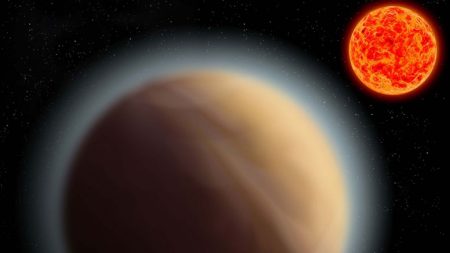May 5, 2017 – In the last week Stephen Hawking, the noted astrophysicist, has spoken to the world and told us that we have a century to find another Earth or face extinction. This doomsday prophecy is not Hawking’s first. He has raised the specter of artificial intelligence ending humanity as we know it in the recent past. Now he sees climate change, overpopulation, pandemics and possibly an asteroid strike within the next century all contributing to Doomsday here on Earth.
Lucky for us astronomers in Chile have discovered a new exoplanet designated GJ 1132b that we may have to call home. The planet is 39 light years away and appears to have an atmosphere.
States Dr. John Southworth, of Keele University, team leader of the discovery, “While this is not the detection of life on another planet, it’s an important step in the right direction: the detection of an atmosphere around the super-Earth GJ 1132b marks the first time that an atmosphere has been detected around an Earth-like planet other than Earth itself.”
Atmospheres around exoplanets do not guarantee suitability for human life. After all in our own Solar System we have two rocky planets other than Earth that have atmospheres. Venus is an inferno, and Mars is a dry freezer. And gas giants like the outer planets appear to be more atmosphere than solid.
GJ 1132b has 1.6 times the mass of Earth. Its radius is estimated to be 1.375 that of Earth, plus or minus 0.16. Researchers indicate the presence of silicates and iron in the planet’s rocky crust. Spectral examination of the light passing through the planet’s atmosphere indicates strong opacity probably from the presence of water or methane. The planet is also hotter than Earth and if a water world is probably hot enough for steam to erupt in the atmosphere.
Its star is smaller than the Sun, described as low mass. The discoverers don’t describe the star as a brown dwarf although they are among the most prevalent stars in the Milky Way and are defined as low-mass. And based on exoplanet discoveries to date, low-mass stars are proving to be great places to find lots of small rocky planets.
So Mr. Hawking may be able to let out a sigh of relief that we humans with a little geoengineering to cool the place down could have a new place to call home. A century is a long time in technological evolution. Who knows we may have warp drives and interstellar travel by then. Or maybe we will have the tools to fix our own home planet and won’t have to find an exoplanet safe haven for our species.
On a more serious note, when the James Webb telescope is launched next year, GK 1132b should be high on the viewing priority list.









